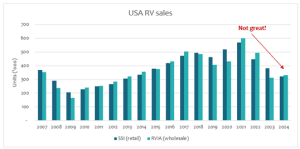Ice, Ice Baby
A low frequency but juicy strategy where the edge is government incompetence.
Let’s dig in…
It’s been almost 6 weeks since the Big Beautiful Bill Act passed and most of the tax benefits for American businesses have been well discussed. 100% bonus depreciation on Capex and full tax deductibility of R&D are welcome benefits for US based businesses, but there are many niche provisions that have received far less coverage.

In simple terms, the Big Beautiful Bill will pick the winners and the losers of this presidential cycle.
If you have been good and you spent sufficiently on lobbying, you will get a tax break. If you’ve been naughty and you’ve donated money to the wrong presidential candidate, you will lose your current tax incentives.
As usual, we are not interested in the politics, but merely in the investment implications.
An overlooked loser is the legacy remittance sector (WU, IMXI), which has been hit with a remittance tax of 1%, which can be reclaimed in case the payment is made with a debit card. This provision seems to explicitly target the unbanked, potentially undocumented immigrants, while it benefits the digital providers such as RELY who only work with banked, legal immigrants. Undocumented workers are on the naughty list…

But who are the winners? If your industry is a creator of manufacturing jobs, especially in red states, you’ll likely come out ahead. Take RVs for instance. RVs are predominantly a domestic industry centered around Elkhart, Indiana where 80% of all RVs are manufactured. This is Amish country with little immigrant labor and lots of American jobs at stake.
So, the BBB allows monthly interest expenses on an RV loan to be fully tax deductible, whereas previously it was only tax deductible in case a buyer itemizes his tax deductions and classifies the RV as a primary or secondary home. We estimate that a consumer’s monthly payment on a trailer could fall by ~10%, which is very significant given the affordability issues that have been plaguing the industry. Dealers can also get a tax deduction on their floorplan financing for towables, a welcome tailwind for dealers such as CWH.
Big ticket consumer items have been highlighted as a KEDM theme in the past, and every time you think that sales can’t possibly go any lower, they surprise to the downside. We’re not calling a bottom as the consumer rolls over here, but we’re sharpening our pencils on the sector for when we get more bullish on consumer spending.

So lets turn to something far more interesting/actionable. What we are more excited about is the US automotive sector, particularly the scrapping of Corporate Average Fuel Economy (CAFE) penalties followed by the potential cancellation of the EPA’s Greenhouse Gas (GHG) standard later this year. Kuppy initiated a discussion on this topic in the KEDM discord channel, but we wanted to more officially write up the theme for all subscribers who don’t regularly use Discord.
Despite years of subsidies for EVs, 90% of US car sales today are still ICE vehicles. Under the previous administrations, CAFE and GHG standards created a difficult operating environment for domestic automakers. These regulations effectively required OEMs to offset the production of their profitable ICE vehicles by either producing a quota of often unprofitable EVs or by purchasing expensive GHG credits from competitors.
This created a system of internal cross-subsidization. Ford’s EV division, ‘Model e’, lost roughly $5b in 2025 to enable the profitable ‘Ford Blue’ ICE division to sell its nearly 4.4 million vehicles. Ford also burns close to $1b per year in GHG credits. This regulatory burden acted as a direct tax on the most profitable part of their business and forced a capital-intensive pivot towards a product with weaker consumer demand.
But what happens if auto OEMs are no longer forced to run money-losing EV divisions simply for compliance purposes? What if they can build the cars that consumers actually want? Pickup trucks can be made more powerful; engines can be made larger and expensive turbochargers can be eliminated. Production of hybrid cars which add 10-20% to a car’s cost and weight can be scaled down. OEMs can focus their resources on their most profitable cars.

Of course, Ford’s EV losses won’t disappear overnight. They would be foolish to shut down an EV business after investing 10’s of billions of dollars. Who knows what the regulatory landscape looks like under a next administration? But in the last earnings call, Ford indicated they are already reallocating their capital from the EV segment to the higher return Pro segment. They’ve already reduced their commitments to purchase CO2 credits by $1.5b. In their words, the changing regulation could unlock “a billion-dollar opportunity.”
Ford’s open enthusiasm surprised me given that the GHG standard have not yet been repealed and this is likely to face legal hurdles. You’d think they want politicians to remain fully focused on Walmart’s 3% profit margins before anyone realizes that automotive companies are about to earn a return on invested capital.
Meanwhile, the market is more focused on the $2b of net tariff impact that Ford guides to, or the ~$3b net impact at GM. While tariffs are a clear headwind in the short run, F and GM produce roughly 80% of their US sales domestically and they have a comparative advantage over non-US producers.
By May of 2026 we will have a new Fed Chairman who will most likely be elected based on his willingness to cut the federal funds rate. It’s hard to predict what this will do for the US10YR, but cars are financed with 36-48 month loans and interest rates will likely follow the FFR materially lower. The US car fleet is old. Will this finally drive a replacement cycle?
The tax incentives go further. Interest expenses on car loans will also become tax deductible, provided the car was assembled in the USA. This should lower monthly payments by 4-5%. OEMS will also benefit from 100% first-year bonus depreciation for tax purposes.
OEMs have much cleaner balance sheets than they have had historically, and capital returns rank high on their capital allocation priories. GM has repurchased 35% of its shares in the last 3 years. Keep in mind though that this remains a terrible industry where minor headwinds can have outsized effects on profitability. For instance, both GM and F have faced margin pressure due to mounting warranty costs.
In summary, OEMs have the potential to go from awful businesses to businesses that are merely bad as the regulatory cost is about to disappear and consumer get to buy the cars they actually want. Or as Kuppy would say, they may go from sh*tty to slightly less sh*tty, and create a lot of value in between. F and GM create a lot of American jobs and are likely to come out ahead under Trump. If they can only partially reverse the $5b in EV losses, save a few billion on EV Capex and earn an extra few billion on ICE trucks, very soon you’re talking real money.

Start your 28-day free trial
Kuppy’s Event Driven Monitor (“KEDM”) is not a financial or investment advisor and the information contained in this publication is not intended to constitute legal, accounting, or text advice or individually-tailored investment advice and is not designed to meet your personal financial situation. The investments discussed in this publication may not be suitable for you. You are required to conduct your own due diligence, analyses, draw your own conclusions, and make your own investment decisions. Any areas concerning legal, accounting, or tax advice or individually-tailored investment advice should be referred to your lawyers, accountants, tax advisors, investment advisers, or other professionals registered or otherwise authorized to provide such advice. KEDM makes no recommendations whatsoever regarding buying, selling, or holding a specified security, a class of securities, or the securities of a class of issuers, and all commentary is for educational purposes only. The investment examples noted are intended to provide and example of the events and data KEDM flags each week and is not representative of typical returns generated by each event or any future returns.
